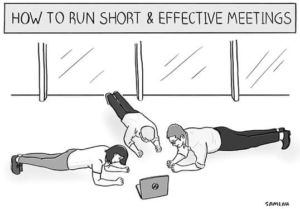 October 2024
October 2024
Condo boards can be tempted to run meetings informally. This is a mistake making it easier for one or two board members to dominate meetings and control proceedings.

Robert’s Rules of Order provides standard rules for conducting meetings. These rules have helped thousands of boards run their meetings efficiently, solve problems, meet their corporation’s goals and carry out their tasks. This helps ensure condominium communities and buildings are better run and managed, and is one of the most powerful tools at your board’s disposal.
Failure to run meetings according to an accepted standard makes it harder to control them or deal with situations that arise.
First published by U.S. Army officer Henry Martyn Robert in 1876, Robert’s Rules of Order is a manual of parliamentary procedure to help any group or organization conduct business in an orderly, fair and coherent manner. It is an indispensable tool for conducting board meetings used by corporations, trade unions, religious groups and condominium communities.
Robert’s Rules sets out the most important objectives of condo board meetings:
- Set goals or an agenda for the board meeting
- Keep the meeting streamlined and on topic
- Allow all participants to have input without allowing one or more to dominate or hijack the meeting
- Ensure there is discussion of important matters
- Ensure votes are cast to decide policies that the board deems necessary and appropriate
Agenda
An agenda keeps everyone focused and ensures a productive meeting lasting no more than an hour.
The agenda should be prepared in advance, based on input by all board members, condominium manager and superintendent. The most important topics should be addressed earlier in a meeting.
Topics requiring a prolonged discussion may be delayed to a subsequent meeting ensuring that topics requiring little time can addressed quickly.
Motions, Seconds and Discussion
A motion is how an idea, item or decision is addressed. The goal is to have a majority of the board in agreement.
A motion is made by a board member stating “I make a motion for [fill in the blank].” Seconding a motion can be made verbally by saying “I second the motion” or by raising one’s hand after someone asks “Is there a second for the motion?” If not seconded, the proposed motion does not go forward.
Once a motion is seconded, discussion begins. The Chair for the meeting calls on those raising their hand to speak one at a time. Once everyone who wishes to speak has done so, a vote on the motion is taken.
Calling a Vote
Any board member can make a motion to end discussion and/or call a vote at any time. If a motion to end discussion is challenged, a formal motion to end discussion must be made and a vote taken. No other discussions proceed other than the vote to end discussion and a vote on the motion. Once discussion is closed, voting on the motion begins.
The Chair calls for an oral vote or a paper ballot where everyone votes at the same time. A simple majority wins the vote and the motion passes. If a majority vote is not received, a motion can be made to obtain more information and deal with the matter at a subsequent meeting. Voting results should be recorded in the meeting.
Amending a Motion
Board members may agree with the decision or action to be taken by the board, but wish to change the wording of or expand the motion to make it clearer or stronger. The Chair would state “Making a motion to amend the motion to add…” then, “Is there a second?…” A discussion follows with a vote on the proposed amendment.
Point of Order and Point of Information
The Chair’s role and responsibility is to ensure every board member is heard, and can speak without favoritism or bias. Those who have not yet spoken and wish to do so have precedence over those who have already spoken. This ensures the conversation, or floor, is not monopolized by one or a few individuals.
If a speaker violates or disregards a particular rule, they can be interrupted. The objector declares a “Point of Order” and is immediately recognized by the Chair and required to explain their justification for the interruption. The Chair can agree with the Point of Order and halt the discussion or reject it by declaring the objector “out of order” and allowing the discussion to continue.
During a discussion, someone may want to provide information they consider helpful or necessary.







